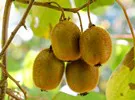 This week NZKGI responded to the Environmental Protection Authority’s (EPA) Social Impact Assessment (SIA) report on the effects of their proposed hydrogen cyanamide ban, a spray used by kiwifruit growers commonly known as Hi-Cane.
This week NZKGI responded to the Environmental Protection Authority’s (EPA) Social Impact Assessment (SIA) report on the effects of their proposed hydrogen cyanamide ban, a spray used by kiwifruit growers commonly known as Hi-Cane.
Hi-Cane, used once per year on kiwifruit orchards, is a critical chemical for the success of the kiwifruit industry. It promotes uniform bud break of flowers ultimately maximising the production of high quality kiwifruit. NZKGI opposes a ban on Hi-Cane and is of the view that any ban with any phase-out period is unnecessary and inappropriate. A ban would create uncertainty and stifle investment.
NZKGI CEO Colin Bond says the EPA’s proposed ban of Hi-Cane is unjustified. “Hi-Cane is a vital tool for kiwifruit growers and would result in significant losses for both the kiwifruit industry and the wider economy if it was banned. As New Zealand’s largest horticultural export, kiwifruit continues to play a vital role in regional economic development around the country and makes a significant contribution to New Zealand’s economic performance.” An independent economic report commissioned by NZKGI found that banning Hi-Cane in New Zealand would cost the economy $1.56 billion.
“The magnitude of the economic and related benefits derived from the use of hydrogen cyanamide should be described as massive and NZKGI is of the view that the EPA’s Update Report does not adequately consider the wellbeing effects on individual growers or the impacts on national wellbeing that would arise from a ban of Hi-Cane.” Bond does however note that the SIA report highlights that the effects on Māori growers and their whanau and communities would be significant should Hi-Cane be banned.
The SIA report also recognizes the removal of the carcinogenicity classification for Hi-Cane, and NZKGI accepts that appropriate training combined with industry led agreed continuous improvement actions will ensure that the risk for all spraying operators is kept as low as possible. Further on the topic of spray, NZKGI is of the view that the role of effective shelter in reducing spray drift ought to be recognised and provided for in relation to the proposed buffer zones.
In addition to the impact of Hi-Cane on people, the sprays’ impact on birds and soil organisms has also been an important component of the EPA’s reassessment. Based on the expert reports, NZKGI is of the view that the risk assessments relating to birds and soil organisms are overly conservative, and in light of the new information in these reports, the risks to birds and soil organisms should be re-assessed and the risk ratings reduced.
The EPAs full SIA report, and NZKGIs response to this report are available on the EPA website. These reports will be complied with other evidence and a hearing, including presentations from experts, growers and other industry stakeholders will be held in March to decide on the future of Hi-Cane.
For more information:
Mike Murphy
NZKGI
Tel. +64 0800 232 505
Email: [email protected]
www.nzkgi.org.nz
